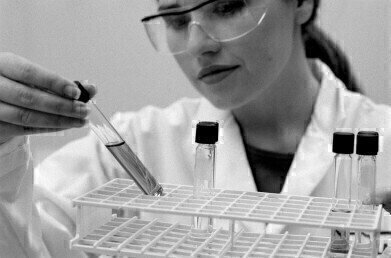News & views
How was DNA Discovered? Introducing Watson and Crick
May 28 2014
The history of the discovery of DNA - or deoxyribonucleic acid - is a long and complex one. Though the majority of credit for the discovery of DNA is attributed to James Watson and Francis Crick, such a simplistic interpretation does not tell the whole story.
Indeed, far from having a revelatory “Eureka!” moment where DNA was stumbled upon out of the blue, Watson and Crick’s successful identification of the double-helix structure of DNA was rather the crowning achievement of years of scientific research. It is better to think of the discovery of DNA as a jigsaw that had been started by Friedrich Miescher back in 1869, with Watson and Crick laying one of the final pieces, rather than assembling the whole thing themselves.
The First Jigsaw Pieces
In 1869, Miescher made the groundbreaking discovery of what he called “nuclei” inside our white blood cells. This name would later be changed to “nucleic acid”, before finally settling upon the term we use now, “deoxyribonucleic acid”. Though the discovery was important, its enormity was not fully realised for some time.
One of the next men to contribute to the furthering of our understanding of DNA was Albrecht Kossel, who in 1878 isolated the five primary nucleobases of nucleic acid. At the beginning of the 20th century, in 1919, Phoebus Levene successfully identified the three primary elements contained in a single nucleotide – which were phosphate, sugar and the base – and he also suggested these occurred in a regular, recurrent pattern in DNA.
Though Levene’s theory oversimplified the structure of DNA, in 1937 William Astbury proved that he was correct in his supposition that the structure was indeed regular by using X-ray diffraction. Increasingly scientists suspected that DNA carried genetic data, a theory that was lent weight by the 1944 paper written by Oswald Avery, Colin MacLeod and Maclyn McCarty, based on experiments they had conducted the year previously. This belief that DNA carried heredity and the “transforming principle” was confirmed by experiments conducted by Alfred Hersch and Martha Chase in the early 50s.
In 1950, Erwin Chagraff developed a set of rules for DNA, linking certain properties to each other, such as the equable levels of adenine and thymine and of guanine and cytosine. Three years later, Watson and Crick took all of this evidence gathered by previous scientists and added some finishing touches to the puzzle, theorising the double-helical structure of DNA and its anti-parallel, right-handed nature.
A Jigsaw not Quite Complete?
Though Watson and Crick did devise the base model of how we view DNA today - and those underlying principles remain unchanged – since then, several tweaks and additions have been made to the theory of DNA structure.
Nevertheless, all of these subsequent and cumulative discoveries have made increased our knowledge of DNA significantly over the years and have helped to make it crucial in today’s world. Among other uses, DNA is instrumental in the fields of forensics, genetic engineering and indeed the criminal justice system. Its particular role in the latter is discussed at more length here.
Digital Edition
Lab Asia 31.6 Dec 2024
December 2024
Chromatography Articles - Sustainable chromatography: Embracing software for greener methods Mass Spectrometry & Spectroscopy Articles - Solving industry challenges for phosphorus containi...
View all digital editions
Events
Jan 22 2025 Tokyo, Japan
Jan 22 2025 Birmingham, UK
Jan 25 2025 San Diego, CA, USA
Jan 27 2025 Dubai, UAE
Jan 29 2025 Tokyo, Japan



















